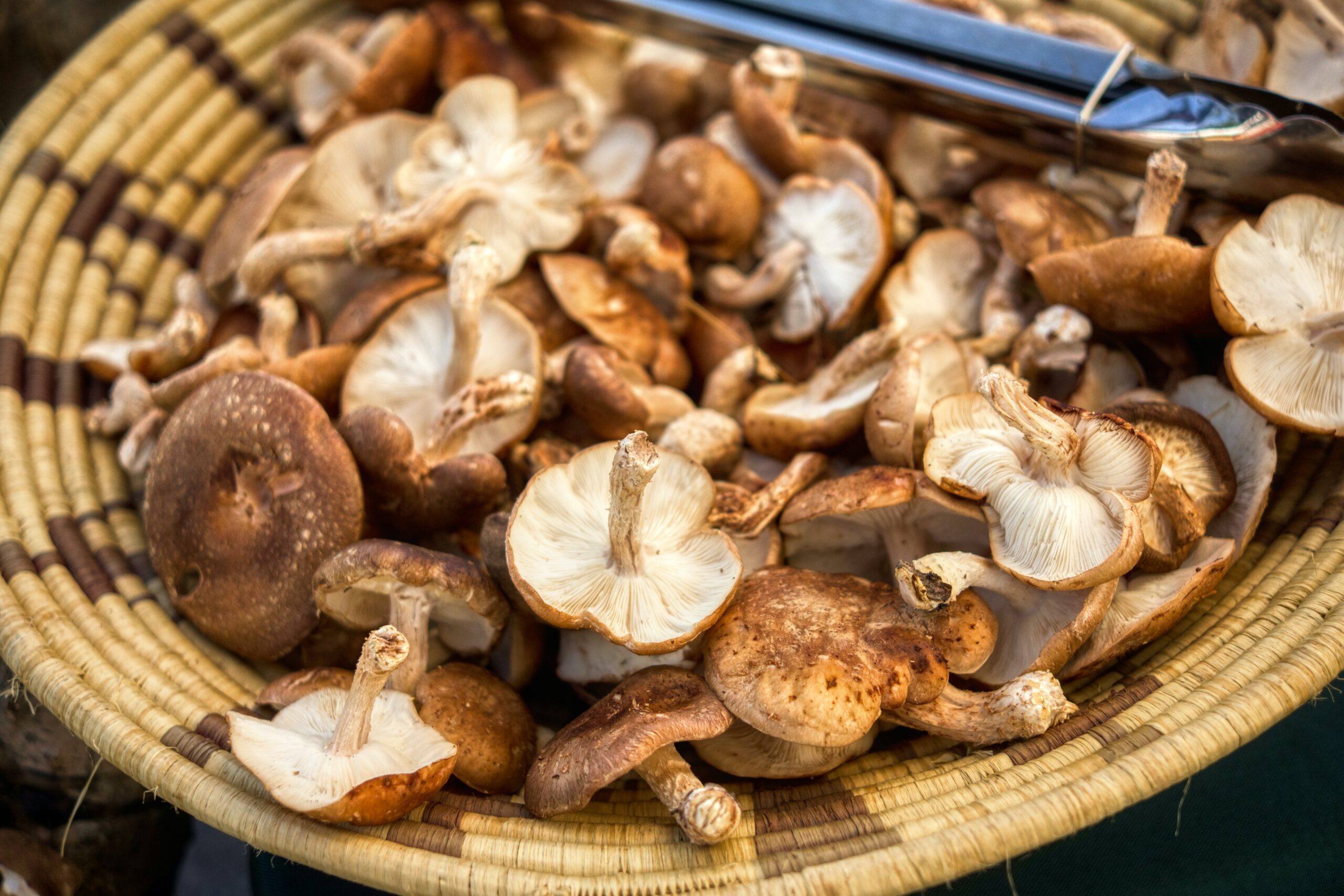The Ultimate Beginner’s Guide to Home Mushroom Farming 2024
Discover the joys of growing your own mushrooms from the comfort of your home with this beginner’s guide.
From choosing the right species, to preparing the perfect growing medium, to harvesting your first crop, this guide will walk you through every step of the process.
Here is a short list of some of the benefits of planting mushrooms at home:
- Fresh and flavorful mushrooms: Home-grown mushrooms are fresher and often have a more intense flavor than store-bought mushrooms.
- Cost-effective: Growing your own mushrooms can save you money in the long run, as store-bought mushrooms can be expensive.
- Eco-friendly: Growing your own mushrooms at home reduces the carbon footprint associated with transporting mushrooms from the farm to the grocery store.
- Nourishing your Health: Packed with vitamins, minerals, and antioxidants, various mushrooms provide numerous health benefits.
- Educational Fun: Growing mushrooms can be both a fun and educational hobby for the entire family to enjoy.
- Sense of accomplishment: There is a great sense of accomplishment that comes from growing your own food and seeing your hard work pay off.
- Reduced waste: Growing your own mushrooms at home eliminates the need for packaging, reducing waste and contributing to a more sustainable future.
Contents
- 1 The Overall 7 Simple Steps to Growing Delicious Mushrooms at Home
- 2 Choosing a Mushroom Variety to Grow: Advantages and Disadvantages
- 3 Obtaining Mushroom Spawn
- 4 Preparing the Growing Medium
- 5 Inoculating the Medium with a Mushroom Colony
- 6 Transferring to a Fruiting Chamber
- 7 Maintaining Optimal Conditions for Growth
- 8 Harvesting and Storing the Mushrooms
- 9 Repeat
- 10 FAQs
- 11 Conclusion
The Overall 7 Simple Steps to Growing Delicious Mushrooms at Home
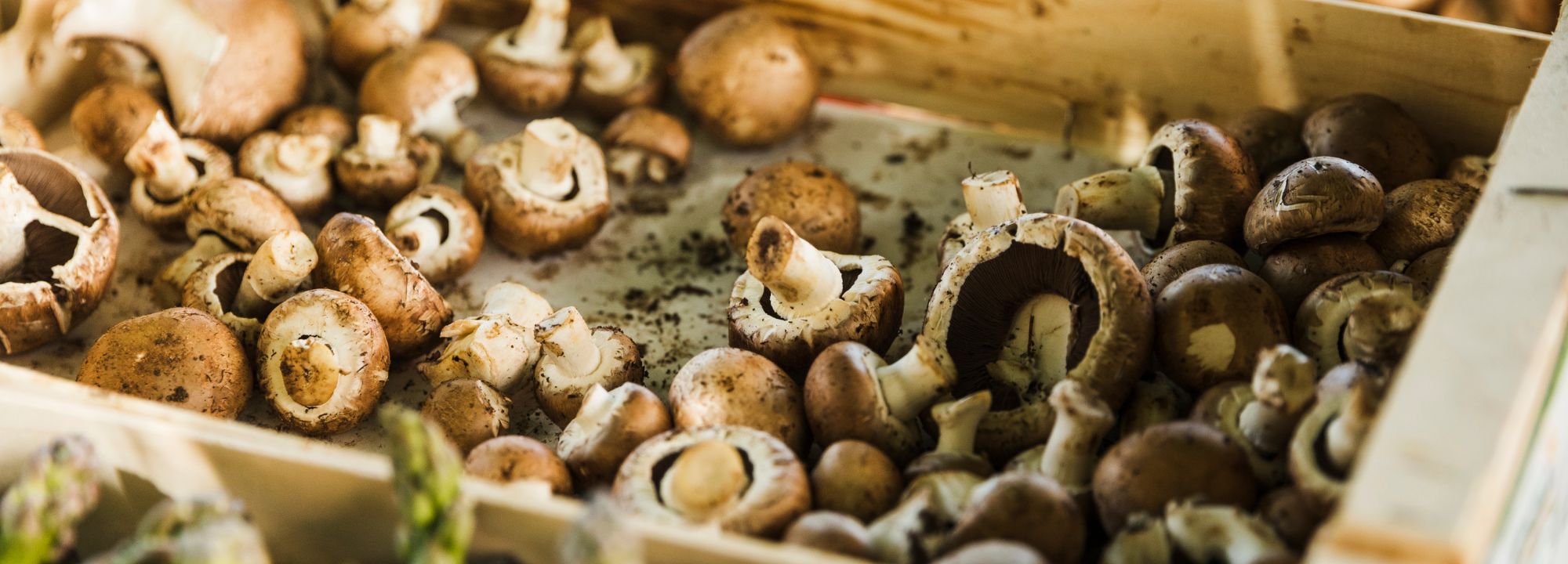
- Choose a mushroom variety to grow.
- Prepare a growing medium (such as straw, sawdust, or compost).
- Inoculate the medium with a mature mushroom colony or spores of a spore print.
- Keep the growing medium in a warm, dark, and humid environment.
- Monitor and maintain ideal growing conditions.
- Harvest your mushrooms when they reach maturity.
- Repeat the process with the leftover growing medium.
Here is a basic guide to get you started:
Choosing a Mushroom Variety to Grow: Advantages and Disadvantages
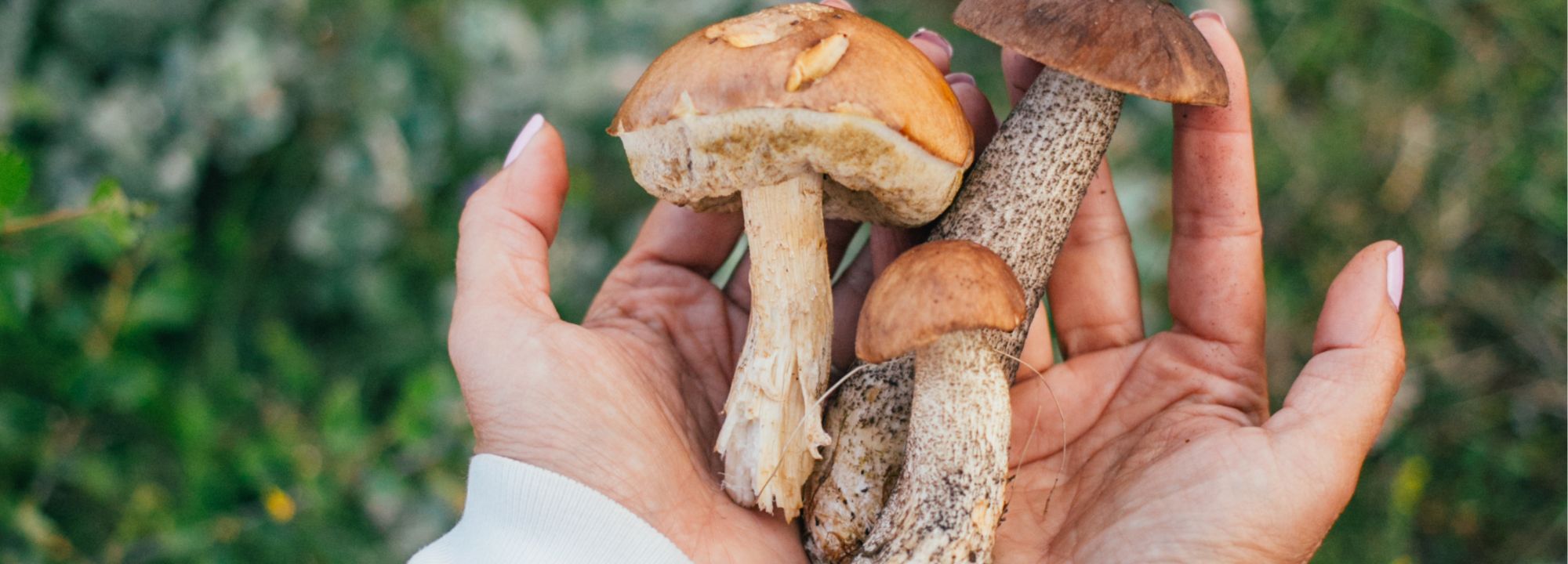
The first step is to choose which type of mushroom you would like to grow.
The easiest mushrooms to plant at home (Click Here)
There are many different varieties of mushrooms, each with their own unique benefits and drawbacks. Here is a list of some of the most popular types of mushrooms, along with their advantages and disadvantages:
Button Mushrooms
Button mushrooms are the most commonly grown and widely available type of mushroom. They are easy to grow and have a mild, slightly nutty flavor.
However, they are not as flavorful as other types of mushrooms and have a relatively short shelf life.
Oyster Mushrooms
Oyster mushrooms are known for their delicate, slightly sweet flavor and tender texture. They are also easy to grow and are a good choice for beginners.
However, they are not as widely available as button mushrooms and may be more expensive to purchase.
Lion’s Mane Mushrooms
Lion’s Mane mushrooms are a popular choice for cooking due to their mild flavor and unique texture. Additionally, their shaggy, white appearance and high antioxidant content make them a nutritious and visually striking addition to any meal.
Shiitake Mushrooms
Shiitake mushrooms are native to Asia and are highly prized for their meaty flavor and dense texture. They are also believed to have medicinal properties.
However, they can be more challenging to grow than other types of mushrooms. May require special equipment and growing conditions.
Portobello Mushrooms
Portobello mushrooms have a rich, earthy flavor and a meaty texture. They are often used as a meat substitute in vegetarian dishes.
However, they can be more difficult to grow than other types of mushrooms and may require more care and attention.
Enoki Mushrooms
Enoki mushrooms are long and thin, with a crisp texture and a slightly sweet flavor. They are often used in soups and stir-fries.
However, they are more delicate than other types of mushrooms and may be more difficult to grow.
When choosing a mushroom variety to grow, consider your local climate, the resources you have available, and your personal preferences.
Obtaining Mushroom Spawn
In order to grow mushrooms, you will need to obtain a source of mushroom spawn. Mushroom spawn is a substance that contains the mycelium. There are several options for obtaining mushroom spawn, each with its own advantages and disadvantages:
The mycelium is the foundation of the fungus and provides the necessary energy and resources for the growth and development of the fruiting body (mushroom). The mycelium is also responsible for spreading and colonizing the growing medium. Is an essential component for successful mushroom cultivation.
Purchase from a Supplier
Purchasing mushroom spawn from a reputable supplier is a convenient and reliable method for obtaining spawn to farm mushrooms at home.
This method ensures that the spawn is of high quality and free of contaminants.
However, purchasing spawn from a supplier can be more expensive than other methods, and you may need to wait for shipping or for the supplier to restock the spawn.
Start from Scratch
Growing your own spawn from spores of a mature mushroom can be a rewarding and cost-effective method for obtaining spawn.
However, growing your own spawn can be more time-consuming and requires a greater level of skill and knowledge.
Find Wild Mushrooms
Foraging wild mushrooms for spawn can be an adventure. This method allows you to find and use different types of mushrooms to farm at home, that are native to your area.
However, identifying correct mushroom species & avoiding contamination can be difficult.
Preparing the Growing Medium
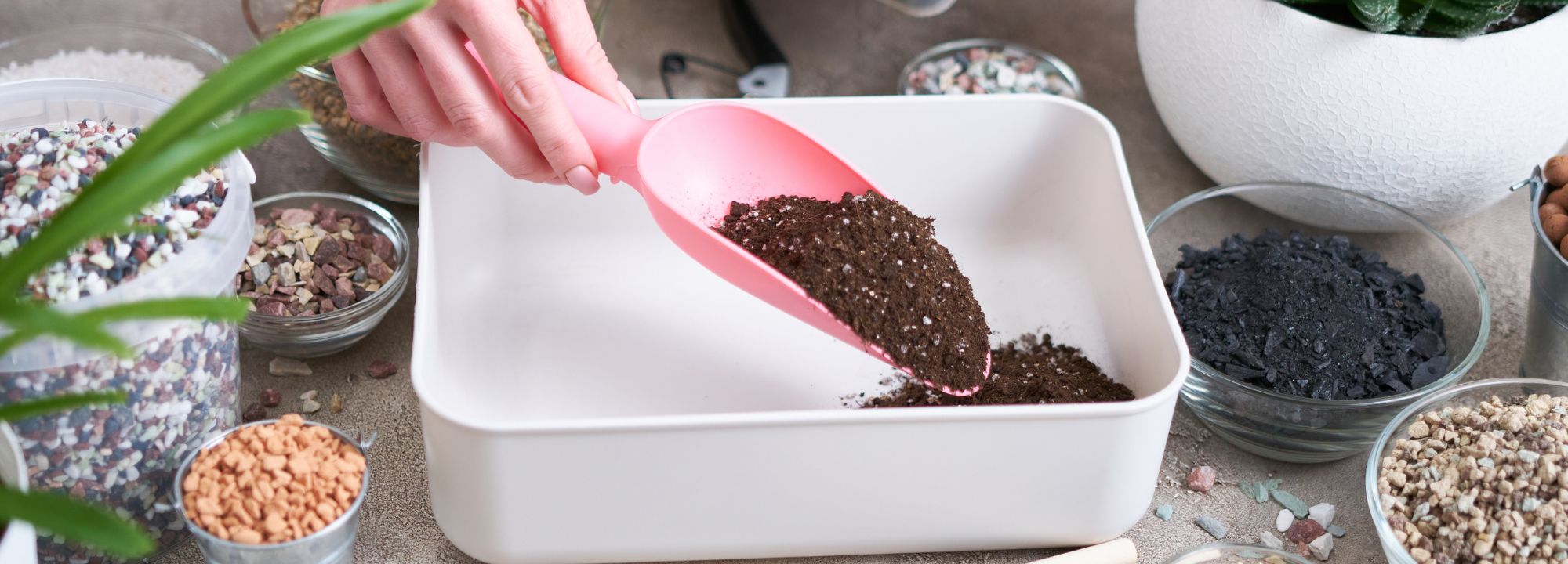
The growing medium is the material that provides the nutrients and support for the growth of your mushroom colony.
There are several different options to choose from when preparing the growing medium, including straw, sawdust, and compost.
Here is a list of some of the most popular growing mediums, along with their advantages and disadvantages:
Straw
Straw is a popular choice for growing mushrooms because it is widely available, relatively inexpensive, and easy to work with.
Offers a good balance of moisture and air, easy sterilization, but may become compacted and need frequent replacement.
Sawdust
Sawdust is another popular choice for growing mushrooms, particularly for species that prefer a denser growing medium.
It provides good air circulation and is easy to sterilize.
However, sawdust can be more difficult to work with than other growing mediums and may require special equipment.
Compost
Compost is a favored growing medium for mushrooms, providing a balance of moisture and air while offering vital nutrients.
It is relatively easy to work with and provides an optimal balance of moisture, air, and nutrients.
However, compost can be more difficult to sterilize than other growing mediums and may attract unwanted pests or pathogens.
When choosing a growing medium, consider the type of mushroom you will be growing, your local climate, and the resources you have available.
Inoculating the Medium with a Mushroom Colony
Inoculating the growing medium with a mature mushroom colony or fragments of a spore print is the next step in the process of growing mushrooms at home.
There are two main options for inoculating the medium: using a mature mushroom colony or using a spore print. Here is a list of the advantages and disadvantages of each option:
Using a Mature Mushroom Colony
Using a mature mushroom colony is the quickest and easiest way to inoculate the growing medium.
This method provides a reliable source of mycelium, which is the vegetative part of the mushroom that will grow and produce fruiting bodies.
However, using a mature mushroom colony can be more expensive than using a spore print and may introduce unwanted pathogens or pests into your growing environment.
Using a Spore Print
Using a spore print is a more cost-effective method of inoculating the growing medium.
This method involves collecting spores of the spore-bearing surface of a mature mushroom and spreading them over the growing medium.
This method provides a reliable source of new mycelium, which will grow and produce fruiting bodies.
However, using a spore print can be more time-consuming and may take longer to produce mature mushrooms than using a mature mushroom colony.
When choosing a method of inoculating the growing medium, consider your budget, the resources you have available, and your level of experience with growing mushrooms.
Transferring to a Fruiting Chamber
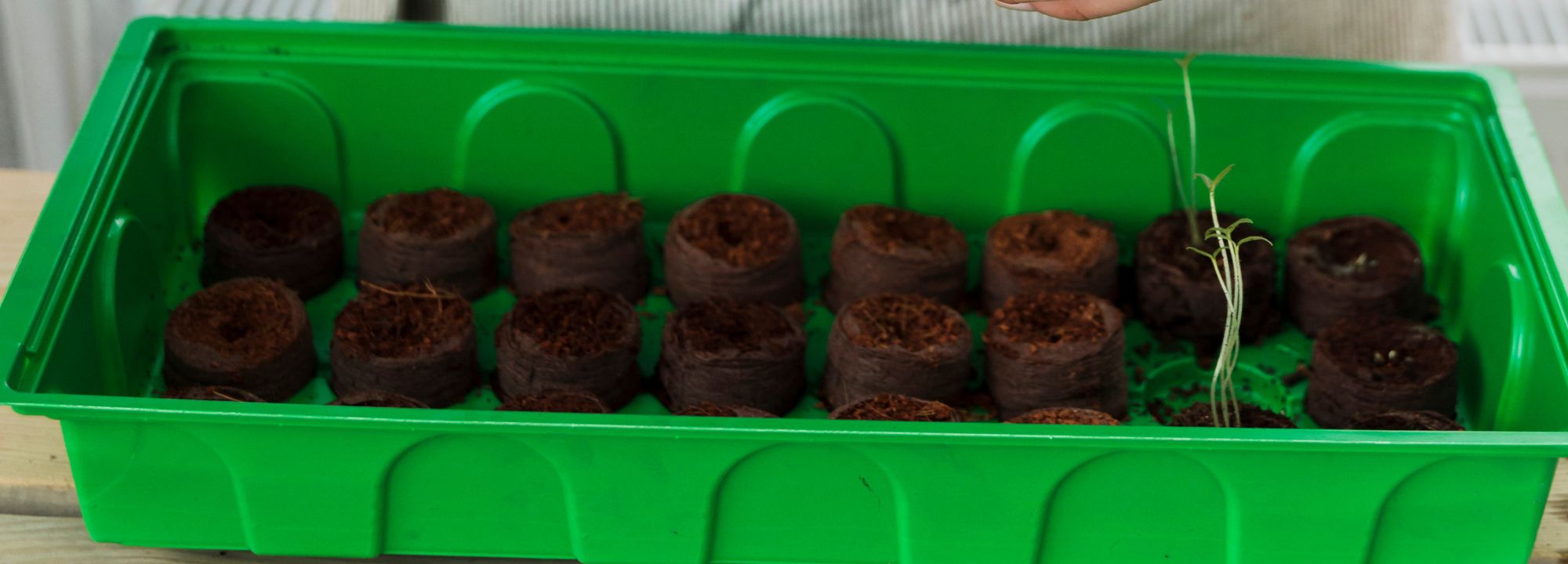
Once you have obtained your mushroom spawn and prepared the growing medium, it’s time to transfer the spawn to a fruiting chamber.
The fruiting chamber is the place where the mushrooms will grow and develop. There are several options for creating a fruiting chamber, each with its own advantages and disadvantages:
Grow Bags
Using grow bags is a convenient and low-maintenance method for creating a fruiting chamber.
Grow bags are pre-made bags that contain a growing medium and are inoculated with mushroom spawn.
Simply place the bags in a warm and humid environment, and the mushrooms will grow.
However, grow bags are often more expensive than other methods and can be less durable over time.
Homemade Chambers
Creating your own fruiting chamber from household items, such as plastic containers, is a cost-effective and customizable method for growing mushrooms.
This method allows you to create a fruiting chamber that is tailored to your needs and budget.
However, creating your own fruiting chamber requires a greater level of skill and knowledge than using grow bags, and it can be more difficult to maintain the proper growing conditions.
Terrariums
Using a terrarium, such as a Fish Tank, is a beautiful and effective method for creating a fruiting chamber.
This method provides a clear and attractive way to view the growth of your mushrooms and can also help to maintain the proper growing conditions.
However, terrariums can be expensive and require a greater level of skill and knowledge to create and maintain than other methods.
When choosing a method for creating a fruiting chamber, consider your goals for growing mushrooms.
Maintaining Optimal Conditions for Growth
In order to grow healthy and robust mushrooms, it is important to maintain optimal growing conditions. This includes factors such as temperature, humidity, air flow, and light.
Here are some of the most common methods for maintaining optimal growing conditions, along with their advantages and disadvantages:
- Using a Controlled Environment: Growing mushrooms in a controlled environment such as a grow tent or grow box provides complete control over all growing conditions, including temperature, humidity, air flow, and light. This method is ideal for those who want to grow mushrooms year-round and want to ensure that their mushrooms grow quickly and consistently. However, setting up a controlled environment can be more expensive and requires more equipment and resources than other methods.
- Using Natural Conditions: Growing mushrooms using natural conditions, such as a warm and humid room in your home or a sheltered area outside, can be a cost-effective and low-maintenance method. This method allows you to grow mushrooms using only the resources that you have readily available. However, growing mushrooms using natural conditions can be more unpredictable and may result in slower growth or lower yields than growing mushrooms in a controlled environment.
Related Posts:
- Article on the Importance of Fresh Air for Mushroom Growth
- How to Maintain Ideal Water Conditions for Growing Mushrooms At Home
- Improving Mushroom Growth with LED Lights
When choosing a method for maintaining optimal growing conditions, consider your budget, the resources you have available, and your goals for growing mushrooms.
With careful consideration and a little bit of research, you can choose the perfect method for growing your mushrooms to maximize your yields and ensure healthy growth.
Harvesting and Storing the Mushrooms
Once your mushrooms have reached maturity, it is time to harvest and store them. There are several methods for harvesting and storing mushrooms, each with its own advantages and disadvantages. Here is a list of the most popular methods:
- Fresh Harvest: Harvesting the mushrooms as soon as they are ready and eating them fresh is the simplest and most straightforward method. This method provides the best flavor and texture, as the mushrooms are at their peak of freshness. However, fresh harvested mushrooms have a short shelf life and must be consumed within a few days of being harvested.
- Drying the Mushrooms: Drying the mushrooms is a simple and effective method for preserving them for longer periods of time. This method involves removing the moisture from the mushrooms and storing them in a dry, cool place. Dried mushrooms have a longer shelf life than fresh mushrooms and can be stored for several months. However, drying the mushrooms can result in a loss of flavor and texture compared to fresh mushrooms.
- Canning the Mushrooms: Canning the mushrooms is a method for preserving them for even longer periods of time. This method involves sealing the mushrooms in jars and sterilizing them in boiling water. Canned mushrooms have a shelf life of several years and are a convenient and easy-to-use option for those who want to have mushrooms on hand for cooking. However, canning the mushrooms can result in a loss of flavor and texture compared to fresh mushrooms.
When choosing a method for harvesting and storing your mushrooms, consider your personal preferences, the resources you have available, and your goals for growing mushrooms.
With a little bit of research and careful consideration, you can choose the perfect method for harvesting and storing your mushrooms to ensure that you are able to enjoy their flavor and benefits for as long as possible.
Repeat
After harvesting, the growing medium can be used again to farm another crop of mushrooms at home. Simply repeat the steps from inoculating the growing medium to harvesting.
Mistakes to prevent when growing mushrooms at home (Click Here)
FAQs
- Can I grow mushrooms indoors? Yes, you can grow mushrooms indoors as long as you provide them with the right growing environment.
- Do I need special equipment to grow mushrooms? You don’t need any special equipment to grow mushrooms, but you will need a few basic supplies such as a growing container, substrate, and mushroom spores.
- How long does it take to grow mushrooms? The time it takes to grow mushrooms depends on the variety you choose, but it usually takes between 3-6 weeks.
- Can I reuse the substrate? You can reuse some types of substrates, such as sawdust or coffee grounds, but others will need to be replaced after each harvest.
- How many mushrooms can I expect to harvest? The number of mushrooms you can expect to harvest depends on the size of your growing container and the variety you choose.
Conclusion
By following the steps outlined in this article, you can create your own mushroom growing setup and enjoy a steady supply of mushrooms all year round.
Note: This is just a basic guide to farm mushrooms at home and there may be additional steps or requirements depending on the species of mushroom you are growing.
It’s important to follow a detailed guide or instructions specific to the species you have chosen, as well as to follow proper hygiene and sterilization techniques to avoid contamination.

